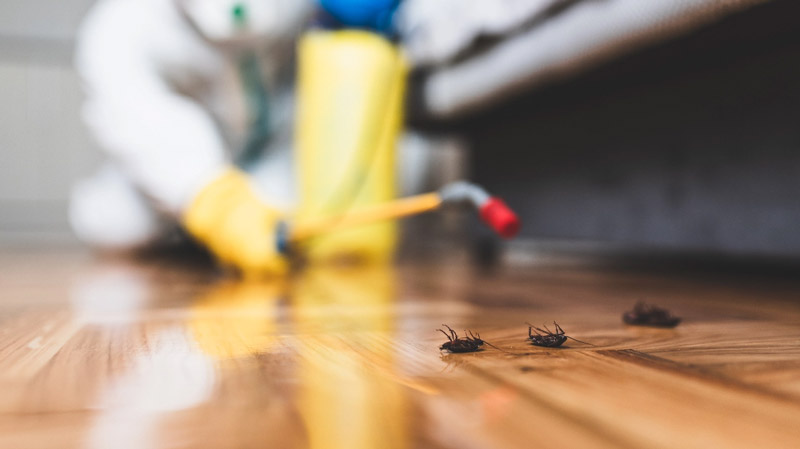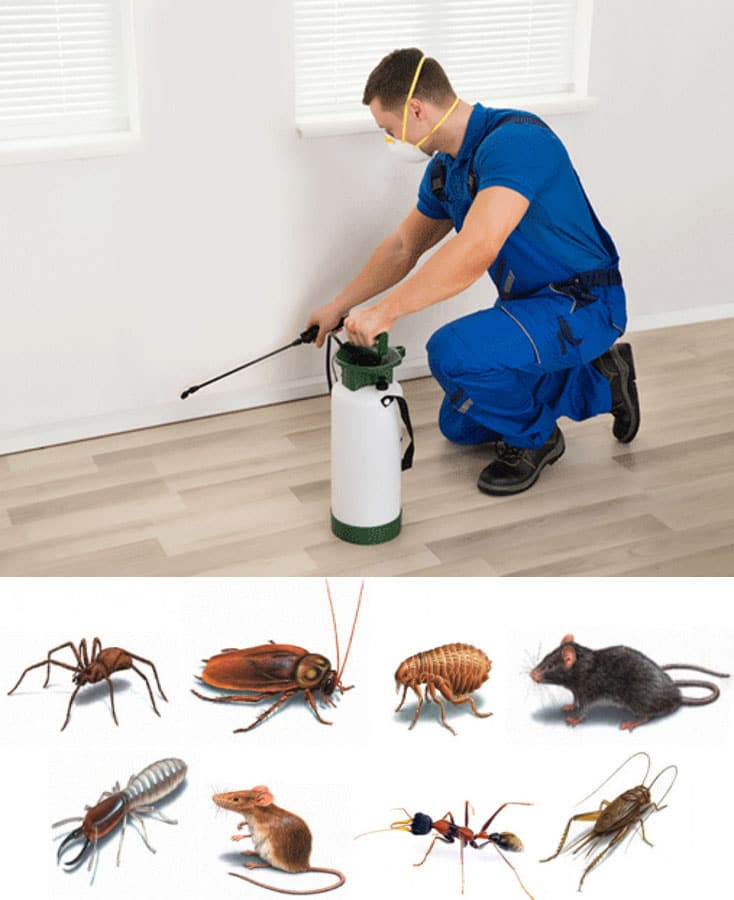Premium Pest Control to ensure your property is clean and pest-free.
Eco-Friendly Pest Control Approaches for Handling Wild Animals in Urban Areas
Urban areas commonly find themselves at the junction of human activity and wildlife, resulting in unique obstacles in parasite management. Environmentally friendly approaches stress sustainable coexistence, utilizing techniques such as environment modification and natural repellents to alleviate human-wildlife problems. These approaches not just shield the atmosphere yet also improve area engagement in wildlife administration. As urban populations proceed to grow, understanding the dynamics of wildlife interactions comes to be significantly critical. What innovative techniques can be applied to make certain both ecological balance and metropolitan security? Discovering this concern reveals a compelling landscape of possible solutions.
Recognizing Urban Wild Animals Characteristics
Comprehending Urban Wildlife Characteristics is necessary for establishing effective and green bug control approaches. Urban locations are significantly becoming habitats for different wildlife varieties, driven by factors such as environment fragmentation, food schedule, and human encroachment. Identifying these characteristics allows for a nuanced strategy to pest management that straightens with environmental principles.
Urban wild animals often includes varieties such as raccoons, squirrels, and birds, which adjust to city atmospheres, locating specific niches in green areas, parks, and even suburbs. Their visibility can bring about conflicts with human beings, specifically when they exploit personnels for food and sanctuary. Recognizing the behaviors and environmental functions of these types informs methods that minimize unfavorable communications while promoting biodiversity.
In addition, acknowledging the interdependencies within urban ecosystems helps in identifying critical locations for environment preservation and restoration. This knowledge adds to the growth of incorporated pest monitoring (IPM) methods that think about the environmental equilibrium, therefore minimizing dependence on unsafe chemicals. By fostering coexistence in between human beings and city wildlife, cities can develop much healthier atmospheres that profit both residents and neighborhood ecological communities, leading the way for sustainable metropolitan living.
All-natural Repellents and Deterrents
All-natural repellents and deterrents use a lasting option to conventional pest control techniques by harnessing the power of nature to keep undesirable types at bay. These environment-friendly solutions commonly make use of plant-based active ingredients, necessary oils, and various other normally occurring compounds that discourage insects without damaging the environment.
One efficient all-natural repellent is peppermint oil, which is understood to ward off rats and pests. Its strong fragrance is undesirable to several insects, making it a preferred selection for city setups. Likewise, vinegar and citrus peels can act as deterrents, as their strong smells are commonly unattractive to different wildlife.
Additionally, diatomaceous earth is an all-natural powder that can be spread out in locations prone to pest task, efficiently dehydrating and discouraging insects without positioning dangers to non-target species. Garlic sprays and neem oil are acknowledged for their ability to fend off a large variety of bugs, consisting of both insects and larger wildlife.
Applying these natural repellents not only reduces dependence on chemical pesticides but additionally advertises a much healthier city ecosystem, fostering a much more balanced coexistence between people and wildlife. By utilizing these strategies, urban locations can properly take care of bug populaces while reducing ecological influence.
Environment Adjustment Techniques
Reliable habitat adjustment techniques play a crucial role in lasting bug management by modifying the environment to make it much less for pest problems. By comprehending the eco-friendly dynamics of metropolitan locations, building proprietors can execute calculated alterations that discourage pests while advertising biodiversity.
(Pest Control PortCharlotte)One main method includes keeping correct hygiene. This includes routine waste elimination, securing garbage can, and eliminating standing water to reduce breeding sites for insects and rodents. In addition, landscaping techniques such as choosing indigenous plants can enhance ecological equilibrium, giving environments for useful microorganisms while lessening sources for insects.
An additional important strategy is to secure entrance factors in buildings. Evaluating and repairing splits in structures, walls, and windows can dramatically decrease pest accessibility. Developing physical obstacles, such as fencings or plant barriers, can inhibit wild animals movement right into human-inhabited areas.
Integrated Pest Management Practices
Structure upon environment adjustment techniques, incorporated bug administration (IPM) techniques supply a holistic approach to controlling insect populations while reducing environmental effect. IPM incorporates numerous strategies, including biological, cultural, mechanical, and chemical controls, to achieve effective pest management.
Organic control includes the introduction of all-natural predators or bloodsuckers to lower insect populaces. Social techniques, such as crop turning and cleanliness, interfere with pest life cycles and diminish their habitats - Pest Control. Mechanical controls, like catches and barriers, give immediate relief from insect pressures without chemical treatment
Chemical controls are used as a last resource, focusing on targeted applications that restrict harm to non-target species and the atmosphere. The selection of eco pleasant pesticides, when required, is important to the IPM framework. In addition, checking parasite populations and evaluating possible damage assists inform decision-making, guaranteeing that treatments are prompt and efficient.
Area Participation and Education

(Rat Control)Workshops and informational sessions can furnish residents with understanding concerning native varieties, habitat conservation, and effective non-toxic pest monitoring methods. Partnership with institutions, local organizations, and government firms better enhances educational outreach, making certain that vital details reaches diverse audiences.
Additionally, community-led initiatives, such as neighborhood clean-up days and environment repair tasks, not just advertise biodiversity but likewise enhance community connections. Pest Control. By motivating locals to share their experiences and observations, communities can create targeted methods that deal with details neighborhood bug issues
Including comments from citizens right into parasite administration prepares allows a more receptive and flexible approach to wild animals challenges. Eventually, educated and Exclusion Pest Control involved neighborhoods are crucial to achieving long-term success in environment-friendly parasite control, leading to healthier city environments that respect both human and environmental demands.

Conclusion
In final thought, eco-friendly parasite control comes close to deal sustainable services for taking care of city wild animals. By focusing on environment alteration, making use of natural repellents, and applying incorporated bug administration techniques, communities can promote an unified conjunction with neighborhood fauna. Involving residents with education and learning boosts awareness and urges liable wild animals communications. Inevitably, these strategies not only secure biodiversity however additionally promote environmental health, making certain urban areas continue to be dynamic ecosystems where humans and wild animals flourish together.